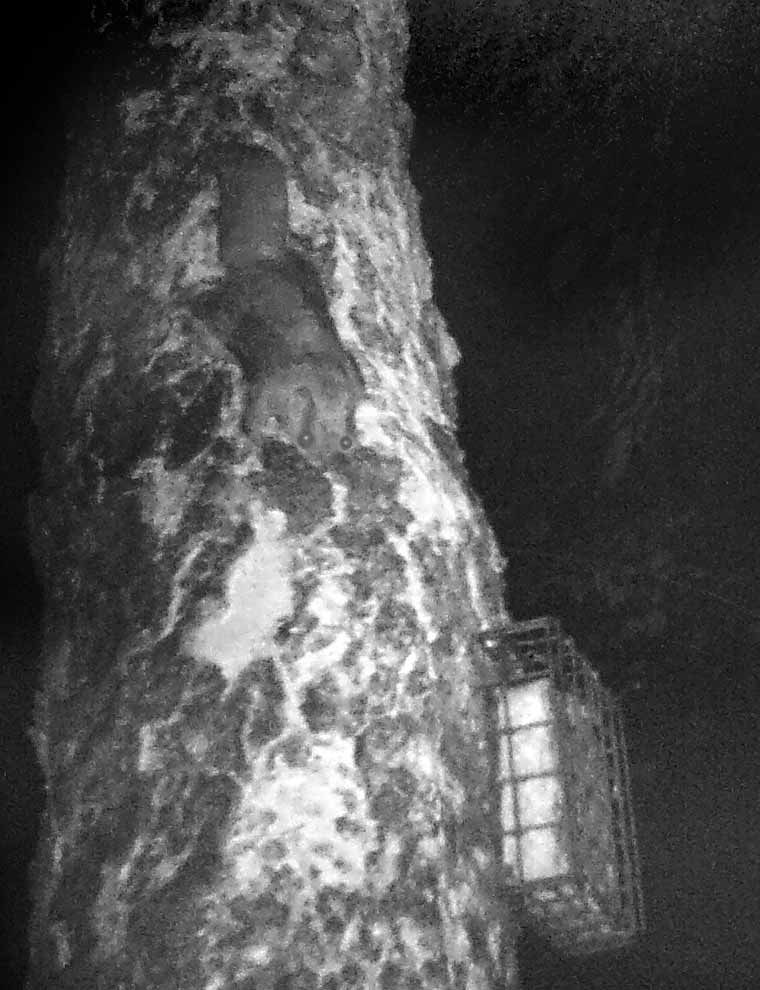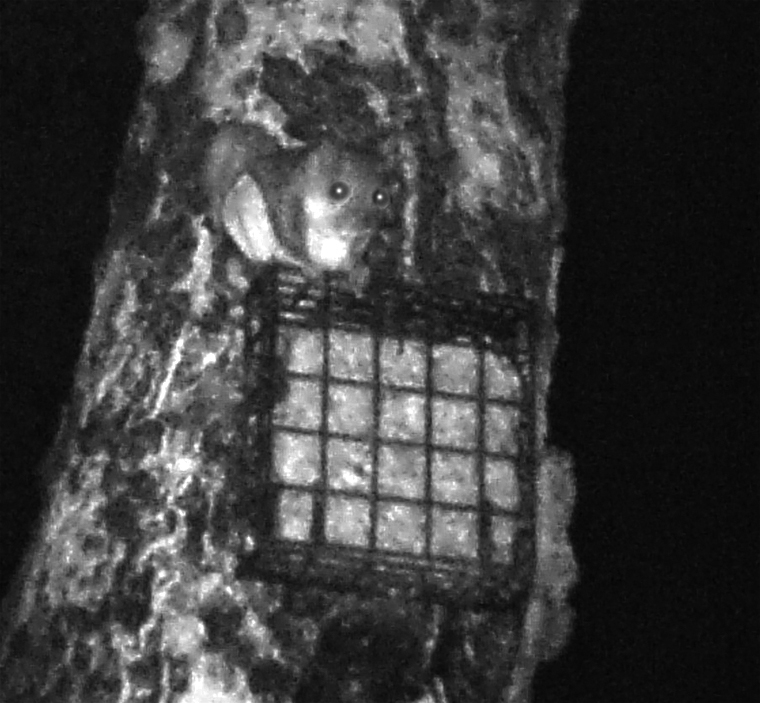 My friend Steve from North Carolina sent me these great pictures of a Southern Flying Squirrel (Glaucomys volans), which is in the habit of visiting his suet feeder. The photographs were taken by Steve with a game camera; the photographs are taken automatically when motion is detected.
My friend Steve from North Carolina sent me these great pictures of a Southern Flying Squirrel (Glaucomys volans), which is in the habit of visiting his suet feeder. The photographs were taken by Steve with a game camera; the photographs are taken automatically when motion is detected.
Flying Squirrels usually are strictly nocturnal. During the daytime, they stay in cavities in trees, often woodpecker holes. Nesting holes used by our smallest woodpecker, the Downy Woodpecker (Picoides pubescens) seem to be favored. Flying Squirrels are small, only 3-5 ounces, so a Downy Woodpecker nesting hole is just right for them. You might also find them in a bluebird house, marten houses, or other man-made objects. They almost always only emerge after dark and go back to their nest before dawn. So they are fairly common, but rarely seen. Steve found that this was the first reported flying squirrel in Rowan County, North Carolina, so now he has the county record.
 Flying squirrels do not really fly, they glide. They spring into the air from a high perch and spread all four legs out at right angles to the body. Flaps of skin covered with soft fur extend from the sides of their body from the ankle of the back feet to the wrist of the front feet. The skin flaps act as wings, and the animals use their tail as a rudder as they glide through the air. In one leap, they are able to glide 150 feet or more. Just before they land at the target, typically another tree, they flip their tail up. The drag from the tail causes their body to rotate upward so that their hind feet land first.
Flying squirrels do not really fly, they glide. They spring into the air from a high perch and spread all four legs out at right angles to the body. Flaps of skin covered with soft fur extend from the sides of their body from the ankle of the back feet to the wrist of the front feet. The skin flaps act as wings, and the animals use their tail as a rudder as they glide through the air. In one leap, they are able to glide 150 feet or more. Just before they land at the target, typically another tree, they flip their tail up. The drag from the tail causes their body to rotate upward so that their hind feet land first.
Steve also took the following short video of a Flying Squirrel at his suet feeder. The feed is from his YouTube posting.
